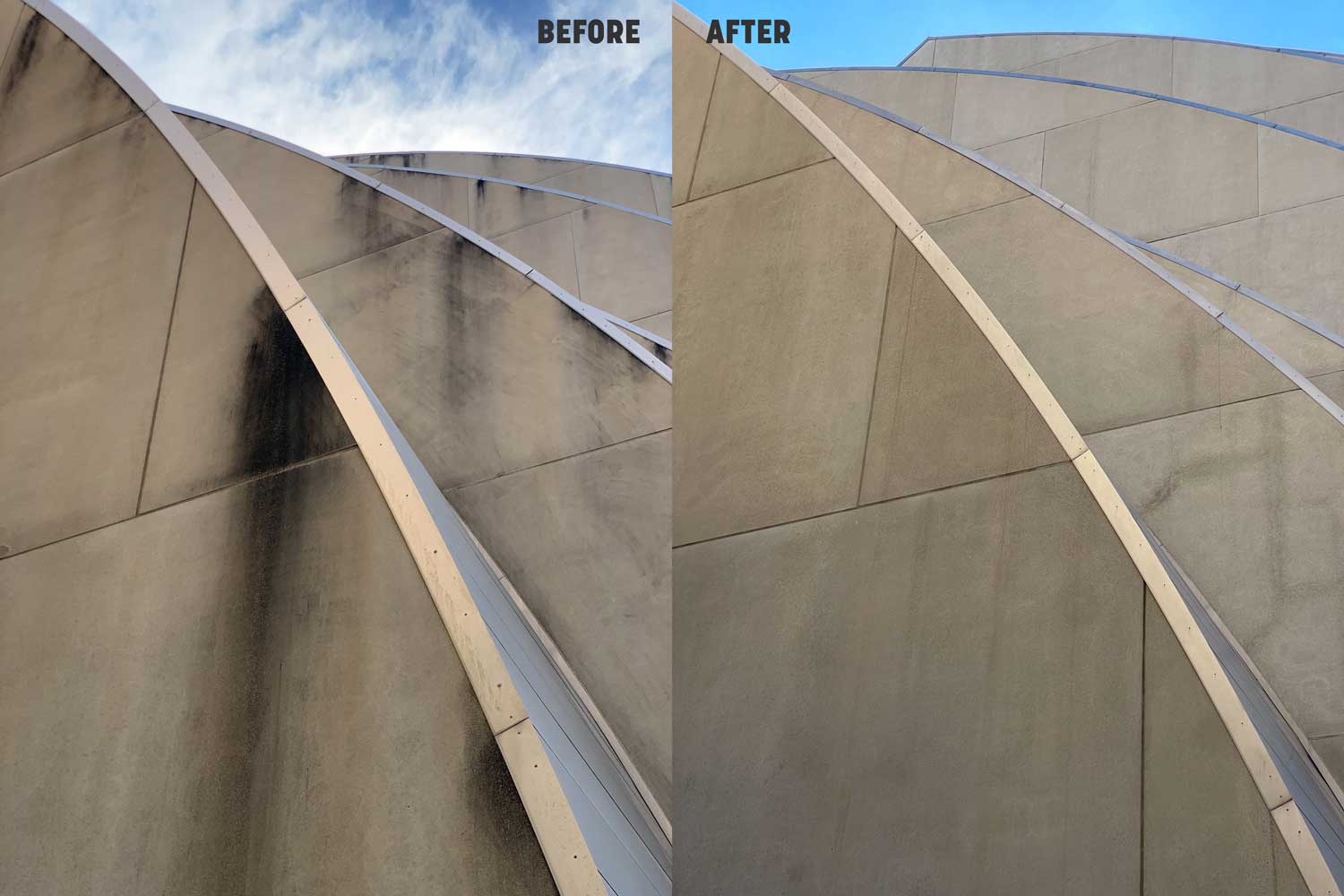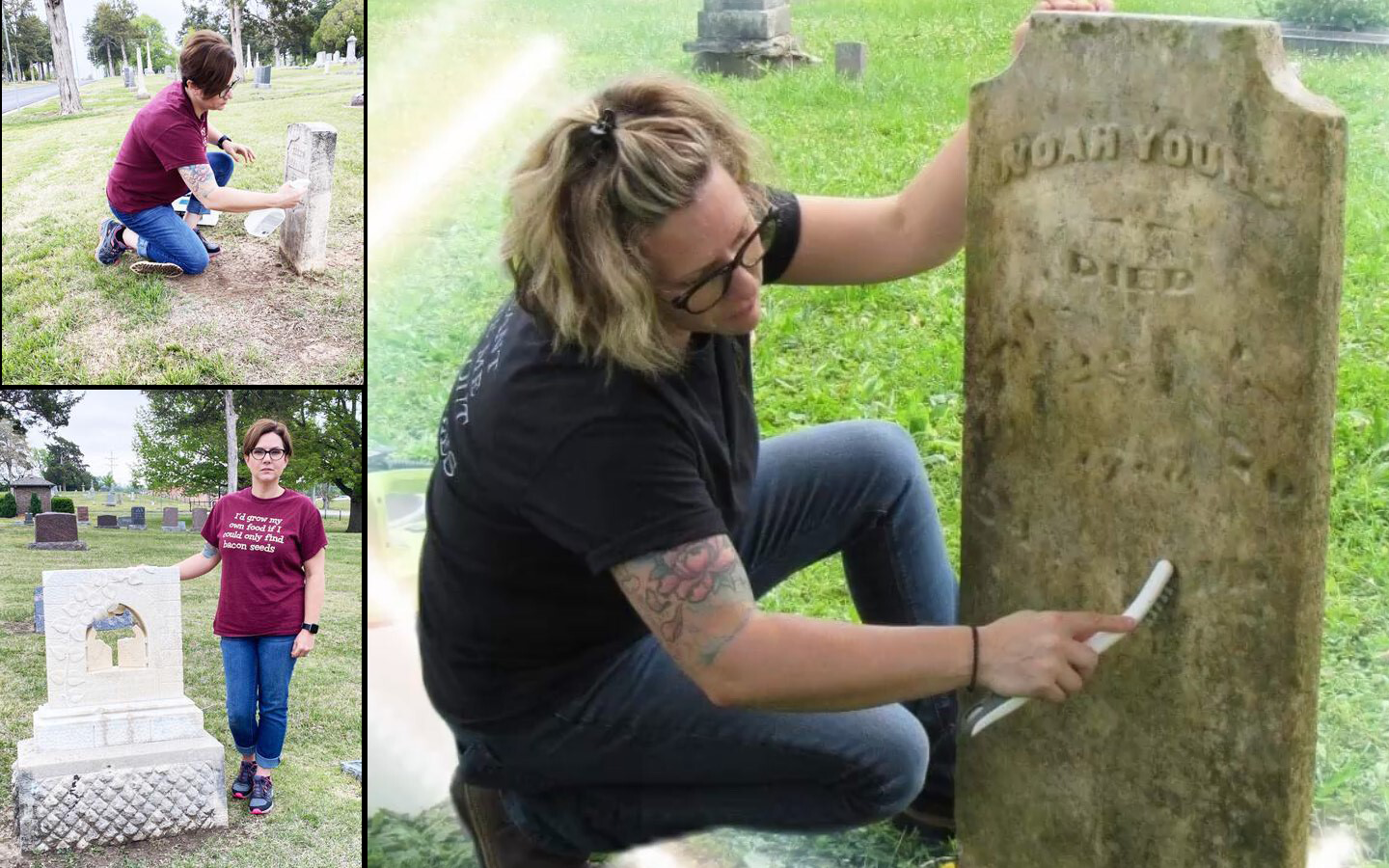Occasionally we'll hear people talk about products that can remove biological staining by just spraying it on and walking away -- no scrubbing or rinsing needed. We wish it were this easy, but unfortunately, it's just not true. That's not holding anyone back from spraying a product onto a headstone covered in biological stains like algae, lichen, moss and mildew, and walking away. Just know that this technique will not likely deliver desired results.
Chris Moore, Research & Development Chemist for PROSOCO, explains these two big myths in biological stain removal.
1. To scrub, or not to scrub
You need to scrub if you want results, period. That's because the action of agitating the cleaner on the surface helps to lift and remove the contaminants so the cleaner can reach beneath that uppermost layer.
"Biological soiling is tenacious," Moore says. "Lichen, mold and moss all mechanically hold onto the stone, and scrubbing helps break that mechanical bond."
2. To rinse, or not to rinse
Simply put, rinsing is an integral part of the cleaning process, Moore says. You really need to rinse after a good scrub because otherwise, all those contaminants that you worked hard to lift from the surface will remain and cause further staining.
"Rinsing flushes the contaminants away, preventing them from redepositing," he says. "It also flushes any spent cleaner away, preventing residues from attracting dirt."
There is one situation in which he says it might make sense to apply a cleaner and not rinse it, and that's if you're using it as a preventative treatment.
Even then, "I wouldn't expect that to last very long," Moore says. "Instead, we typically recommend treating with a water repellent of some kind to prevent the moisture that biological soiling requires to grow."
![]()








